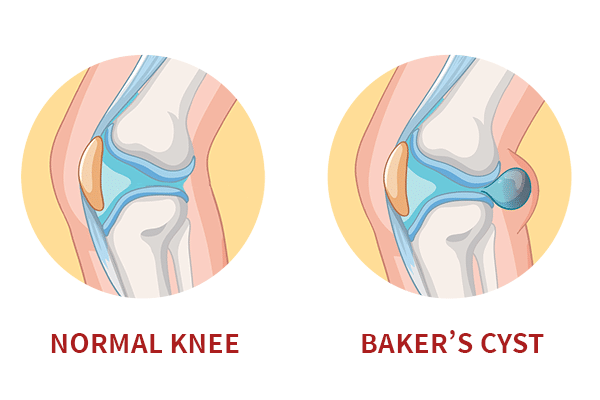By Dr YeJeong Kim
Understanding Baker’s Cyst: What’s That Lump Behind Your Knee?
A Baker’s cyst, also known as a popliteal cyst, is a fluid-filled swelling that develops behind the knee. It often feels like a soft lump or balloon and can cause a sense of tightness or discomfort, especially when bending or straightening the leg. While the cyst itself is usually harmless, it’s often a sign of an underlying issue within the knee joint.
The knee naturally produces synovial fluid to lubricate and nourish its structures. However, when the joint is injured or inflamed—due to conditions like arthritis or a cartilage tear—it may produce too much fluid. This excess fluid can build up and bulge out into the space behind the knee, forming a Baker’s cyst.

The Course To Recovery
Recovery from a Baker’s cyst begins with identifying and addressing the root cause. My first step is to assess what’s triggering the excess fluid in the knee. If there are no existing scans, I’ll often perform a diagnostic ultrasound in the clinic to help narrow down the issue. In some cases, patients may also be referred for further imaging such as X-rays or MRI to get a clearer view of the joint structures.
Common Triggers For Baker’s Cyst:
- Arthritis (especially osteoarthritis): As cartilage wears down and the joint becomes inflamed, the body responds by producing more synovial fluid to protect the joint. This excess fluid can accumulate and leak into the back of the knee, forming a cyst.
- Meniscal tears: The meniscus is a piece of cartilage that cushions the knee. When it tears, either from injury or degeneration, it can cause joint irritation and instability. This irritation leads to increased fluid production, which can result in a cyst forming behind the knee.
- Cartilage damage: Any damage to the smooth surfaces inside the joint creates friction and inflammation, prompting the knee to produce more synovial fluid. If the pressure becomes too great, that fluid can escape into the popliteal space and form a cyst.
- Inflammatory conditions such as gout or rheumatoid arthritis: These conditions trigger ongoing inflammation in the joint lining, leading to swelling and overproduction of joint fluid. The constant build-up of fluid can create enough pressure to cause a Baker’s cyst to develop.
Advanced Assessment And Treatment In One Place
We take a comprehensive approach to Baker’s cyst treatment by focusing on both symptom relief and the underlying cause. With on-site diagnostic ultrasound and a team experienced in managing knee joint and soft tissue conditions, we can assess and begin treatment in a single visit.
- Aspiration (Fluid Drainage): In selected cases, the cyst may be drained under ultrasound guidance to relieve pressure. However, addressing the root cause is essential to prevent recurrence.
- Joint Injections: Depending on the underlying issue, corticosteroid or regenerative injections like P.R.P (platelet-rich plasma) may be recommended to reduce inflammation and promote healing within the joint.
- Focused Shockwave Therapy: This non-invasive treatment uses high-energy acoustic waves to target deeper tissues around the knee joint. Shockwave therapy can help break down chronic inflammation, reduce joint stiffness, and stimulate natural healing—especially in cases involving cartilage damage, tendinopathy, or early-stage arthritis contributing to cyst formation.
- Physiotherapy and Myotherapy
Targeted rehabilitation supports better joint movement and reduces strain on the knee. Therapy may involve hands-on treatment, strengthening exercises, and correcting movement patterns to reduce fluid build-up and improve long-term knee function.


